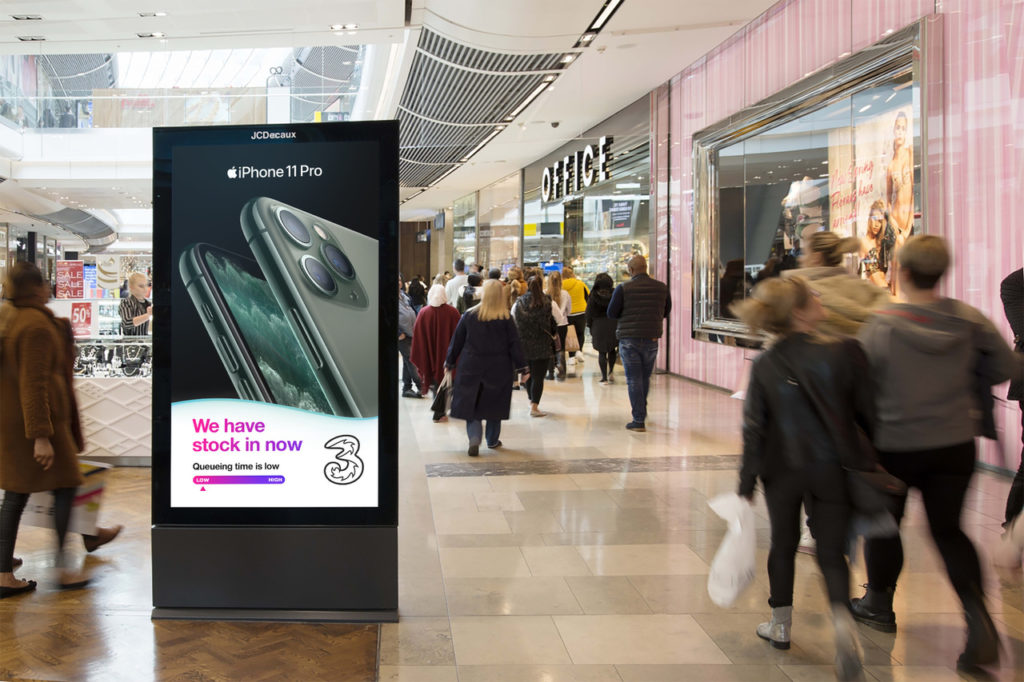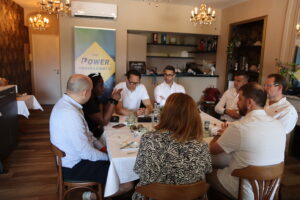By Dan Douglas, Co-Founder, StoreBoost
Programmatic OOH coming of age
Finally there’s enough supply in the UK to be taken seriously with JCD, Global and Broadsign already feeding SSPs with most of their inventory and Clear Channel rumoured to be readying a launch for later this year.
This is creating a new value exchange for digital OOH with those who have invested in data able to derive the value of the impressions and panels they buy beyond the industry trading currency. Clients that are invested in data and modelling in other digital channels are now adding programmatic OOH to the model so they know the value for their future bids and can then have always-on triggers that include OOH ready to turn on automatically and at speed. This in turn should drive growth in OOH spend, which is the holy grail for all of us in the sector.
It’s the speed and automation that are game changers here and will certainly help with the value proposition. Most OOH is planned and bought a long time in advance for known events like sales and launches. However, business operates in real time and market conditions fluctuate constantly. Digital OOH and programmatic buying now enables them to respond giving them new reasons to invest as no retailer has the time to respond to those conditions with traditional OOH buying and creative practices / workflows
Programmatic OOH has long been feared as a cannibaliser, a driver of distressed or discounted inventory rather than a platform for growth that sits happily alongside traditional buying. Brands that understand their data and have ROI models from programmatic OOH campaigns will bring new money from performance budgets when they want to flex their spend based on opportunity or need – both derived from real time data. For example a movie that’s tracking well in some locations but not others can be supported hyper locally to drive box office
Time to move past weather triggers
We as an industry spend too long celebrating old award entries and not enough on making data driven concepts integral and normal, rather than one off innovations ticking a box. We’re looking back as a justification for not looking forward. It’s staggering to believe that less than 10% of all digital OOH campaigns are dynamic when we were at 5% over 5 years ago. We’ve seemingly stalled.
There simply isn’t a clear trajectory of work that won awards as innovation at their time becoming mainstream today. We’re still celebrating work from 5 years ago with rudimentary data sets rather than businesses that have deployed machine learning to not only model their ROI but are constantly improving it with inputs from their real time marketing for creative and content. The content may not be shiny enough for Cannes and our collective obsession for new, but if it’s working and scaled it should be celebrated.
Clients need to be invested in their own data capabilities and make sure their marketing team can access it
Clients need to be invested in their own data and see that that can drive the creative in their advertising in the same way it drives their purchasing, stock, store layouts, promotions and logistics. They have data scientists and expertise that is structurally too far away from their marketing departments.
We need to move past weather triggers once and for all and use the full range of data available to marketers from 1st party to 3rd.
For example:
– Sales data that enables optimised product choices like McDonalds’ dynamic menu pilot
– Dynamic pricing that’s the norm online coming to physical retail to move audiences out of peak time shopping to flatten peaks and troughs to optimise the in-store experience and revenue throughout the days
– Stock data that plays on scarcity and promotes availability
– Footfall data that makes a virtue of low queue times or crucially, availability of staff to support purchase choices
Falling between the gap between creative and media
Dynamic, data driven advertising can be powerful and premium, yet we don’t have enough advertisers with their own business cases and ROI models for OOH, let alone aware of the opportunity.
Why is this? It’s not simply about price, it’s because our industry isn’t structured easily to embrace it. Should it be sold by media agencies as it’s media optimisation or by creative agencies? Neither are really set up to do it at scale and their business models don’t fit.
It’s falling through the gap in between the two.
More importantly clients aren’t yet geared up to buy it as they are often structured like their agencies to buy media from one and creative from another. Clients need to demand it and potentially do it themselves along with other biddable media that’s been in housed if their agencies can’t deliver what they need. This will only happen when the advantages of data driven dynamic advertising are well known to clients and can no longer be ignored.
StoreBoost and the rise of self-serve platforms aimed directly at clients
StoreBoost is a DSP developed by The Cloud and Compass to support physical retailers get footfall when they need it across all proximity digital channels (OOH , mobile, social and in store).
Retail footfall is a genuine use case for programmatic OOH as the need to be able to react to footfall peaks and troughs. Post lockdown this is even more relevant as retailers want to optimise safe footfall across all trading hours. Being able to turn media offer is just as valuable as flexing it to support downtime and create a positive customer experience, especially when physical retail is so fragile and customers can be pushed online at a drop of a hat.
The Cloud and Compass developed Liveposter nearly 10 years ago in partnership with Posterscope as a standalone content management platform for the emerging digital OOH market.
However, without programmatic media buying capability the value of data driven content is diminished in terms of real time marketing and so we have returned to the market with programmatic media and creative in one platform with attribution baked in.
Alongside other DSPs globally we hope to stimulate growth in OOH and tip programmatic into the mainstream by working closely with brands and retailers to utilise their data effectively.
This year, programmatic OOH has finally come of age.









